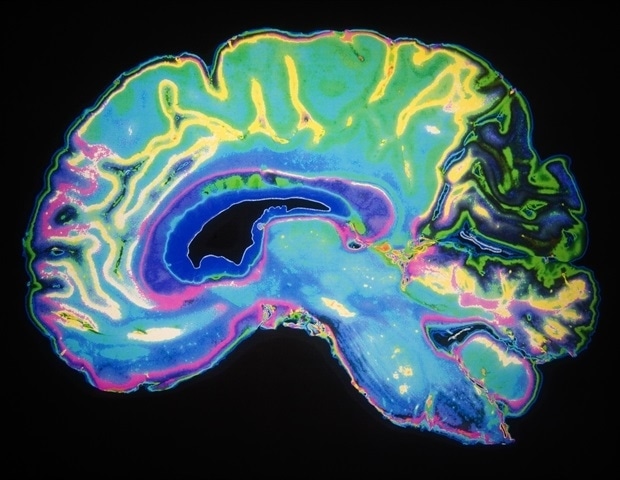
Scientists have used MRI scanners to discover the parts of the brain which understand metaphors, in both healthy volunteers and people with schizophrenia. They found that people with schizophrenia employ different brain circuits to overcome initial lack of understanding. The researchers hope this identification of brain reactions and affected areas may help people with schizophrenia to better comprehend metaphors in everyday speech. This work is presented at the ECNP congress in Copenhagen.
People with schizophrenia have often problems in understanding some common figurative expressions, such as humor, irony, and spoken metaphors. They tend to take the metaphor at its literal meaning (for example, "a leap in the dark" may imply jumping and darkness for someone with schizophrenia): it may take some time for them to arrive at an understanding of what the metaphor is meant to imply. There has been little attempt to understand why this might be so at a neurological level.
A group of Polish and Czech researcher examined 30 patients who had been diagnosed with schizophrenia and 30 healthy controls. While undergoing a brain scan in a high-sensitivity MRI, they read 90 brief stories. 30 of the stories had a metaphorical ending, 30 had an absurd/nonsense ending, and 30 had a neutral ending (i.e. a literal ending). The scientists monitored brain activity while the subjects were reacting to the stories.
They found that compared to controls, the patient group showed increased brain activity in certain areas, but lower brain activity in others. For example, the healthy group showed brain activation in the prefrontal cortex (near the front of the brain) and left amygdala (at the center of the brain, near the top of the brain stem), implying that these are the brain areas where metaphors are normally processed. Instead, schizophrenia patients showed a decreased activation in the temporal suculus (an area ascending from the low central brain towards the back of the head).
Researcher Martin Jáni, from the Jagiellonian University, Krakow, Poland said:
Previous researchers studied brain areas that are connected to impaired metaphor understanding in schizophrenia, so comparing metaphors with literal statements. However, by adding the absurd punchline, we were able to explore the stage at which the deficit occurs. We also used everyday metaphors, which would be easily understood.
We found that biggest changes in brain activity in schizophrenia patients occur during the basic stage of metaphor processing, that is when a person needs to recognize there is incongruity between the opening sentence and the punchline. These activated areas of the brain are very different to the brain areas activated in healthy patients, as if the brain is struggling to find a compensatory mechanism, to bypass the circuits normally used to understand metaphor.
It's likely that this inability to understand the sort of conventional metaphors we use in everyday life is socially isolating for people with schizophrenia. While this at the research stage, our hope is that we can develop practical skills in patients with schizophrenia - and indeed the people who know them - which will help them understand the speech the way it was intended"
Commenting, Dr Emilio Fernandez-Egea, University of Cambridge said:
Understanding the neural basis of social cognition are of great relevance for people with schizophrenia. These deficits are often overlooked, despite the impact on the general functioning and in the ability to find and maintain social relationship and work. Expanding our knowledge of this often neglected domain will improve the recovery process in this population".
European College of Neuropsychopharmacology (ECNP)






No comments
Post a Comment